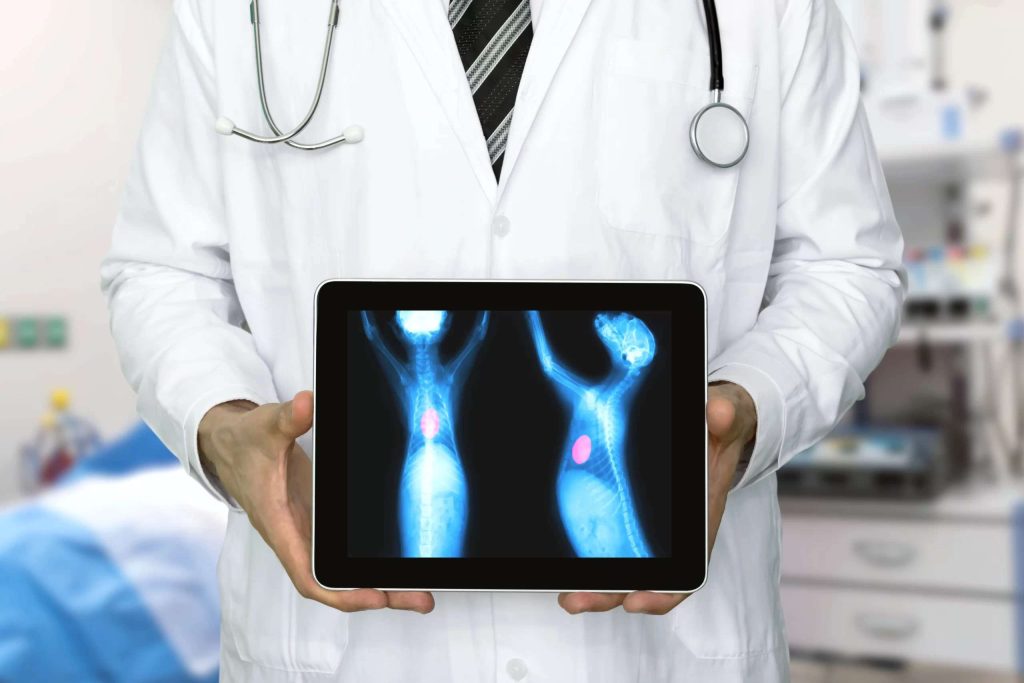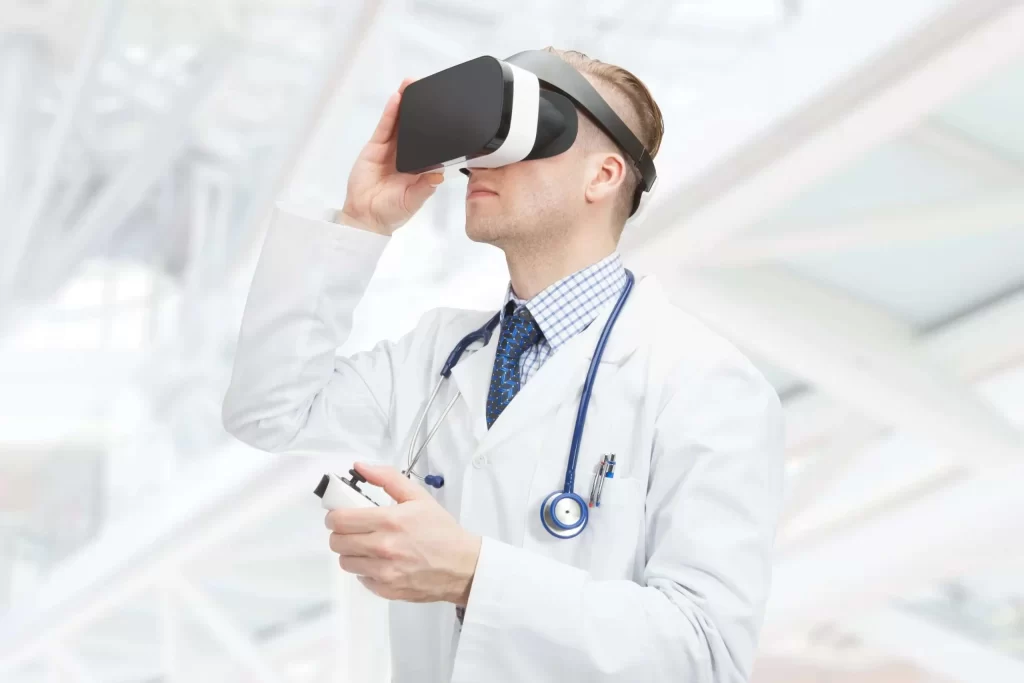Reading time : 5min
Health simulation: what is it about?
Let us look together at the objectives, interests and above all good practices of this method, now considered essential in the field of healthcare.
What is health simulation?
Health simulation is a training method that consists of artificially reproducing realistic care situations or environments to not only learn diagnostic or therapeutic procedures, but to discover the best ways to react, communicate and make decisions.
It can be carried out entirely at a distance – either purely digitally, or presented face-to-face alongside the digital component and may require the use of accompanying support materials or technologies such as:
- medical training manikin,
- a standardised or simulated patient,
- a simulator,
- virtual reality.
Health simulation is based on the implementation of simplified or complex scenarios using a simulation technique such as a role-playing game, procedural or patient simulator, a serious game or utilising augmented or virtual reality.


What are the objectives of the health simulation?
The objective of this method is to be able to practice specific technical skills and/or procedures repeatedly, to practice clinical, diagnostic and/or therapeutic reasoning, to train how to manage certain behaviors (professional situations, teamworking, communication, etc.), or to deal with particular clinical situations, such as an unforeseen event or an emergency, etc.
Why do you practice health simulation?
A health simulation provides many benefits and allows medical and paramedical professionals who undergo face-to-face or digital training to:
- be able to experience a wide variety of situations, including so-called “patient-risk” situations;
- Improve their ability to cope, by participating in scenarios that can be repeated;
- retain information better, by putting theory into practice and training in situations very close to reality;
- access new support equipment, to learn simple or complex
A face-to-face also allows a learner:
- to observe and analyse their practices and behaviours as well as their interactions with each other;
- to learn how to work as a team.

The conduct and best practices of a simulation session
A simulation session responds to a specific methodology and must thus take place in a pre-established pattern that includes three distinct phases: the briefing, the simulated session and finally the debriefing.

1. The briefing
The general briefing is an important step that allows the trainer to specify the framework of the simulation session and its objectives. This is crucial for:
- recalling educational objectives
- presentation of the general context and conditions of the simulation (overall scenario, initial patient condition, history, evolution of the patient’s clinical condition, etc.);
- the presentation of the environment (configuration of premises, actors in attendance, etc.)
- learners’ familiarity with the support materials and/or technologies used;
- the to recap the rules, covering ethics, principles of confidentiality (especially for video recording), with non-judgmental approach.
In general, the goal for the trainer is to put learners at ease and to create an environment conducive to learning. The briefing thus allows the simulation session to be conducted and the debriefing prepared.
In an e-learning simulation, the briefing will also be present and will “set the scene”. It will be proposed, not by the trainer, but by a narrator or by the hero or other characters in the simulation.
2. The simulation session
Once the briefing is complete, the simulation session begins according to the predetermined scenario.
During the session, learners “play their own roles” in the face of a specific situation and are guided by the trainer. The trainer is responsible for changing the scenario according to the reactions of the learners and to also evaluate them. In addition, a trainer can also intervene, as the “facilitator”, to help learners who find themselves stuck in a difficult situation, or to avoid them moving into a situation of failure, not foreseen in the scenario.
Note that the trainer can be virtual, i.e., integrated into the scenario, by writing pre-established feedbacks. In this situation the simulation could be completed alone as self-training.


3. Debriefing
Debriefing (which follows the simulated session) is the best time for analysis and synthesis and consists of three phases:
- the descriptive phase is an opportunity for learners to take a step back and discuss the session that has just taken place, collectively express their feelings, verbalize the facts, evaluate their choices, their actions and intentions;
- the analysis phase provides learners, with the help of the trainer, to propose an analysis of the actions and practices carried out (or not carried out) during the simulated situation;
- finally, during the synthesis phase, the trainer carries out an overall summary of the session, and provides feedback to the learner/s, in line with his/her expertise.
Debriefing is therefore a key stage (its duration is usually at least equal to that of the simulation), as it is the critical moment of learning and reflection in response to the simulation session.
This debriefing can also be set up as self-training in the form of a completely virtual simulation. It is designed by the teaching teams beforehand and takes into account the learner’s choices during the experiment. Trainers may in this phase propose that learners go back to certain stages or activities to retry their attempt.
As you can see, a health simulation can allow someone to learn how to best manage themselves in an important situation (especially a high-risk one) by recreating it identically, and in as much detail as necessary, but without any danger to the patient. It is therefore an original, attractive and particularly effective educational tool, aimed at all professionals in the field of healthcare, especially animal healthcare… provided that certain good practices are followed!
